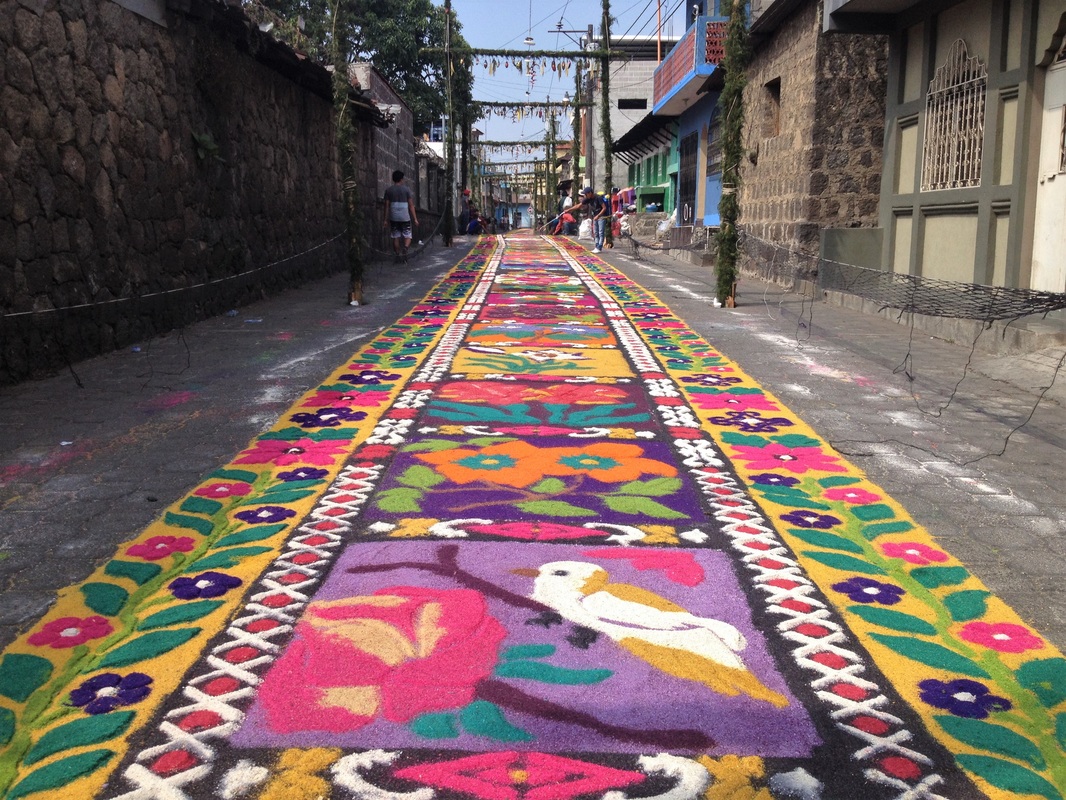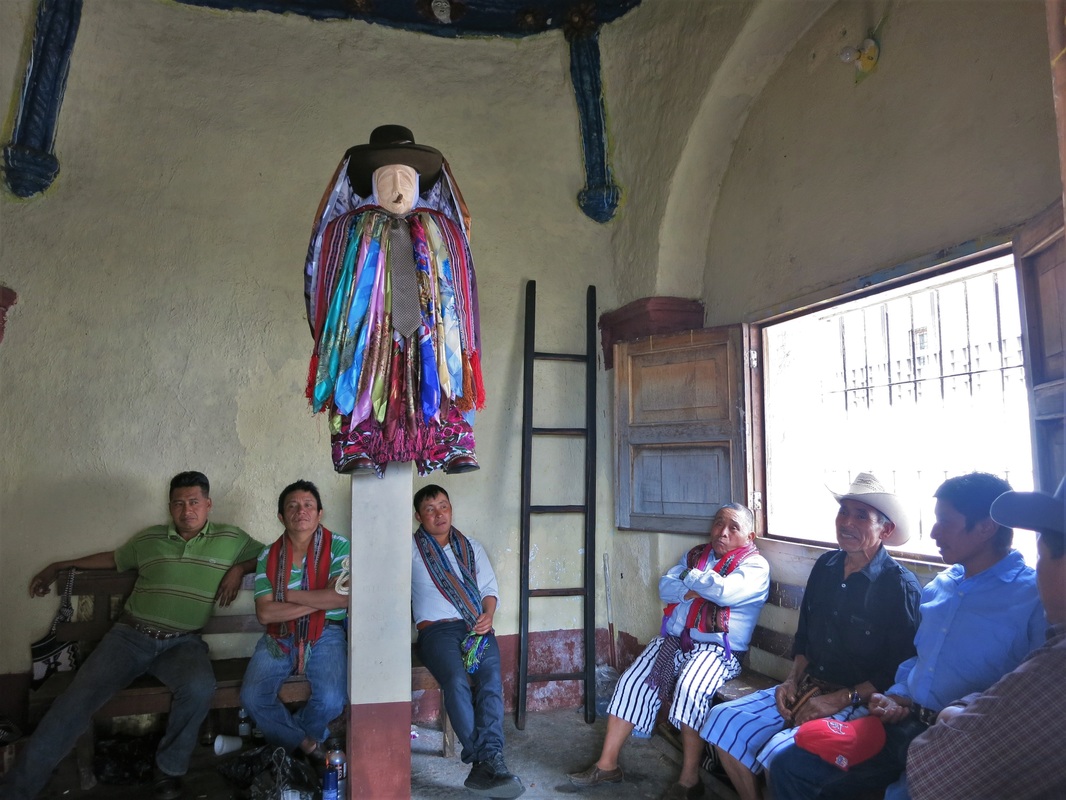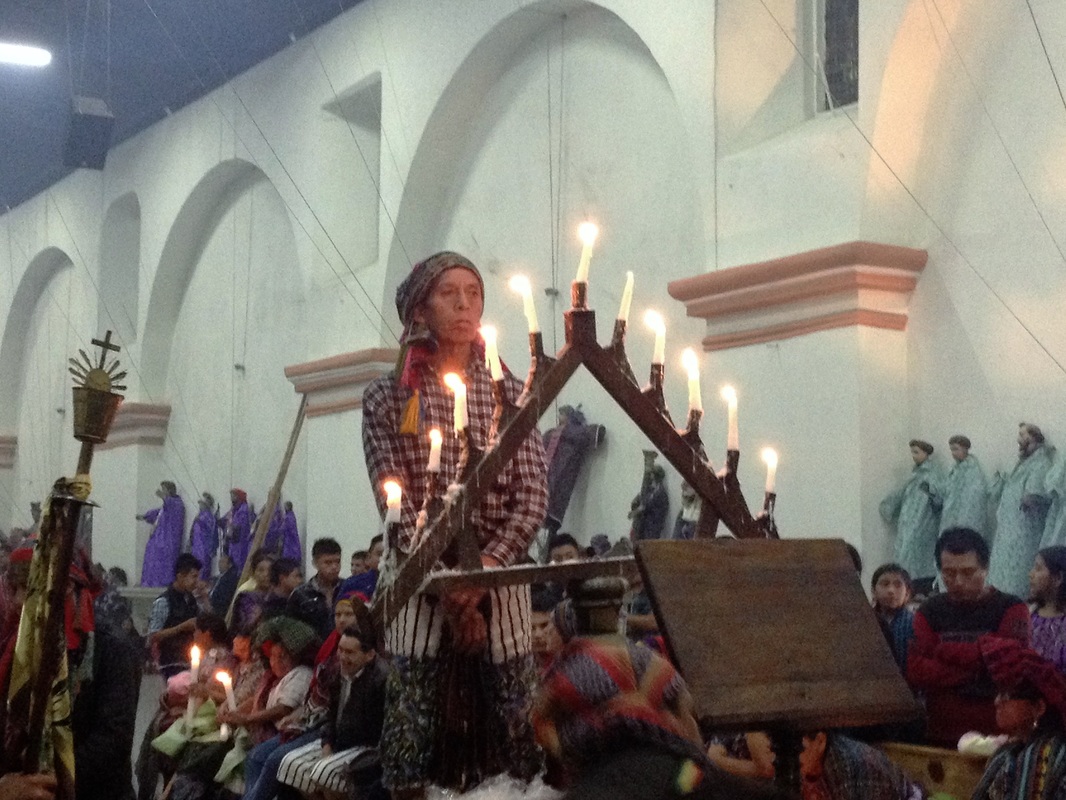With the arrival of the Spanish in the New World in the 1500s, Catholicism gradually became a part of local culture. Yet, despite the resistance of Spanish missionaries, Catholicism in Santiago Atitlan has become a unique example of religious syncretism, or mixture.
Perhaps the most salient example of syncretism is the figure of the Rilaj Mam, more commonly known as Maximon (Mah-she-moan). Depending on whom you ask, Maximon is either the Catholic Saint Simon, Satan, a benevolent Mayan deity, or a sort grandfather of the Tz’utujil people. He has been demonized by the church, but is revered by many. He is a controversial, yet important, figure in Santiago Atitlan.
Each day of Semana Santa has its special ceremonies. On Palm Saturday, men walk overnight to a village near the coast to collect fruit to adorn the town. On Palm Sunday, there is a procession to the Catholic church. On Monday during a ceremony, the cofrades (members of the cofradias) wash Maximon’s clothes in the lake. They leave the clothes to dry on Tuesday, and celebrate his redressing that evening in preparation for the next day’s procession.
Wednesday is a very important day; Maximon comes to the town center, where he visits the mayor. After several hours rest on a special reed mat, he leaves for his small chapel, located on the church square. On Thursday, people visit Maximon at his chapel, bringing offerings of tobacco, alcohol, money, and fruit. Later that evening he joins a midnight procession with Jesus, Maria Dolores, and San Juan Carajo -- the procession often lasts until very early Friday morning.
As the procession of Señor Sepultado is underway, Maximon is taken from his chapel and carried dancing throughout the town on the back of one of the senior cofrades, called the telinel. Later on, Maximon and Señor Sepultado meet in the church square, before Maximon is returned to the cofradia house. The procession of Señor Sepultado lasts until well after midnight on Friday, stretching into the early morning hours on Saturday. Finally, Easter Sunday is celebrated with a mass at the main church.
Semana Santa is a unique and eventful week in Santiago Atitlan. Check out more photos from throughout the week:




 RSS Feed
RSS Feed